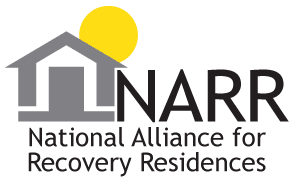Methamphetamine Detox: Risks, Abuse Signs & Withdrawal Symptoms
Methamphetamine, widely known as meth, is one of the most harmful drugs in the world. The Independent Scientific Committee on Drugs, or ISCD, for short, denounced meth as the third most dangerous drug known to man, behind only heroin and crack cocaine.
The probable side effects are devastating and begin to occur shortly after use. Meth is an incredibly dominant CNS (central nervous system) stimulant. It is injected, snorted, or smoked. Meth is also known as ice, crank, speed, tweek, or Tina, among other names.
Rarely, methamphetamine is prescribed for patients with attention deficit hyperactivity disorder and obesity, and only when other treatment methods have been ruled out completely. This is not because it is ineffective, but because meth is exceptionally harmful and very addictive. Abuse of meth is a worldwide pandemic, but most prevalently in Asia and the US, where it is registered as a Schedule II regulated substance. The majority of meth that gets consumed is made by rogue chemists in what are known as meth labs.At the start of the late ’80s, and early ’90s, meth abuse in America rose to epidemic levels at an alarming rate. Thirty years later, we are still struggling with a terrible opioid epidemic, and in its shadow is the meth epidemic. Meth kills more than 10 US citizens every single day, with more than one million Americans being meth abusers at any given time. Regarding the excessive danger in how illegal meth is produced, the extreme risks in consuming the drug, and the dangerous side effects it produces, many believe methamphetamine is the single most dangerous drug ever known to man.
Back in a 2005 Newsweek article titled America’s Most Dangerous Drug, retired US Attorney General Alberto Gonzales was cited saying the following: “In terms of damage to children and to our society, meth is now the most dangerous drug in America.” With that being said, in 2005, Gonzales said that there were 2,161 kilograms of meth confiscated, and there were 17,619 meth lab seizures. Three years ago, there were 2,946 kilograms of meth seized, and still, there were only 9,338 meth lab seizures. This means fewer meth labs are producing more meth or that the US cannot seize as many meth labs as before, causing an increase in the supply of the drug.
Exploring the signs and risks of methamphetamine abuse is an essential first step to educating the public on how to recognize abusive signs and risks and ensure those in need get the assistance they need. Some topics mentioned are what withdrawal from meth can be like and what Ambrosia Treatment Center in South Florida has to offer in the form of detoxification, which is the extremely crucial first step toward recovery.The team at Ambrosia wishes you the absolute best of luck, but with assistance from us, luck is something you may not need! Our ample staff and top-notch physicians are ready, willing, and able to support you today.
If you suspect somebody of misusing meth, signs include:
- High energy degrees
- Widened pupils
- Darting eye motions
- Irrational sweating
- Infrequently impulsive actions
- Inability to sit still
- Extended lack of appetite
- Anxiety or nervousness
- Violence or unusual aggression
- Meth mouth (covered more in-depth later on as a long-term risk)

Risks of Meth Abuse
Meth is a cognitive stimulant with effects that last up to 50 times longer than cocaine, which means one hit can keep you up for days without any sleep. Hearing voices in your head, encountering intense hallucinations, and complete disorder are somewhat familiar among meth addicts.
California is the epicenter of American meth drug addiction, mainly in the Central Valley region. Fresno County, which is in the middle of Central Valley, has one of the highest meth abuse rates on the planet. Margaret Mims is the sheriff of Fresno County, and she announced to USA Today back in 2012: “It drives more crime than any other drugs do. Meth is in its own category because, unfortunately, it’s so much more addictive than other drugs .”
The risks and possible dangers associated with methamphetamine abuse, both short-term and long-term, are among the most severe of all drugs.
- Rapid heart rate
- Arrhythmia
- High blood pressure
- Hyperthermia
- Tremors and/or convulsions
- Coma and death
- Weight loss
- Hair loss
- Skin lesions and sores that don’t disappear
- Financial crises
- Job loss
- Violent, volatile behavior
- Hallucinations
- The feeling that bugs are crawling under your skin
- Loose and unhealthy-looking skin
- Malnutrition
- Memory loss
- A variety of contagious diseases, particularly if injected
- Domestic and child misuse
- Heart attack
- “Meth mouth”
- Coma and dying
The term known as meth mouth arises when a user’s teeth and gums rot to the degree of either falling out or disintegrating. A few aspects go into why meth results in such oral issues. One factor is that long-term meth misuse generally lessens the quantity of saliva generated. This causes enamel erosion and periodontal disease. Another basis is that the side effect of meth use is the grinding of the teeth, which can result in severe tooth damage. Also, meth users grow to lack oral hygiene, which plays a role. And the final factor is that meth addicts tend to have relatively poor diets, and prolonged consumption of sugary drinks results in a world of dental issues.
Recognizing Methamphetamine Abuse & Stepping In
Stepping in and intervening to support somebody you know is struggling with meth addiction is always easier said than done. We love these people, and we do not want to harm them, but we love them enough to know they are harming themselves, and probably at a deadly rate. In very extreme cases, professional intervention is recommended. When it comes to attempting to assist somebody, you love, keep these keys in mind:
- Do not call the person an addict or even blame them for being an abuser.
- Do not mandate the individual to seek aid. Simply state your concerns.
- Encourage the possibility of help, but do not be forceful.
- Protect the accord you already have with the person. Behaving unusually will likely arouse skepticism.
Withdrawal From Meth
Due to the severe nature of meth, and that there is nothing relatively like it chemically, the withdrawal process is unique. Professionals have come to acknowledge that there are necessarily three parts to meth withdrawal: the crash, the craving, and the recovery. The crash is the comedown of the high and usually comprises of sleeping and eating. The craving is the hard part. Here is where the most drastic withdrawal symptoms occur. Then, the recovery is the most prolonged process, during which cravings fade and finally cease.
Methamphetamine Withdrawal Signs include:
- Extreme fatigue (Crash)
- The heightened appetite (Crash)
- Anxiety and panic and nervousness (Crash)
- Paranoia (Crash)
- Mild hallucinations (Crash)
- Severe cravings for meth
- Depression
- Increased body temperature
- Itchiness
- Feelings of powerlessness
- Seizures
Withdrawal signs are much more likely to occur and develop worse if an addict stops using meth without supervised assistance. Meth presents hazardous withdrawal circumstances, and Ambrosia can deliver all of the essential guidance for a meth addict to begin the path to recovery. As mentioned, the initial step is detoxification, commonly called detox, which safely and effectively eliminates all traces of meth from the body.
About Ambrosia Methamphetamine Detox Program
Detoxification From Meth
Chronic meth use changes the brain and body functions, restricting the blood vessels, and cutting back the blood’s constant flow to all parts of the body. Chronic meth use will deplete and eliminate these vessels, making skin probable to injury and hindering the body’s capacity to repair itself. Dependence can result in collapsed jaw, decayed teeth, paranoia, delusions, and psychosis. Methamphetamine affects brain chemistry, disrupting mental ability, and leading to disturbing or violent behavior. Meth detoxification is comprised primarily of psychological distress, and in some cases, people have experienced a psychotic mental breakdown.
Methamphetamine Detox in South Florida: What to Anticipate
Our team of experts has experience working with patients detoxing from meth and have qualified perception for assigning a severity level based on variables such as age, number of years of drug use, the amount used per week, family history, and any underlying mental disorders. Once the first health examination is obtained, our clinical team members work closely with victims to develop a treatment plan modified to individual requirements. The continuum of medication and comprehensive care offered at Ambrosia Treatment Center guarantees the ability to surmount the physical and psychological factors of meth dependence. This achievement will promote the confidence needed to undertake to build the tools essential to successfully engaging in long-term addiction recovery. Contact us today to begin treatment for meth addiction.

Dr. Alam is an internationally renowned psychiatrist with academic affiliations with Northwestern University and University of Illinois, Chicago where he completed his residency training. He has been a principal investigator for over forty studies and has been involved in research leading to the approval of most psychiatric medications currently on the market. He is the founder of the Neuroscience Research Institute which continues to conduct research on cutting edge medication and interventional psychiatry. Dr. Alam is a Distinguished Fellow of the American Psychiatric Association and the American Society of Addiction Medicine. He has won several awards and has been featured extensively on radio and television.










